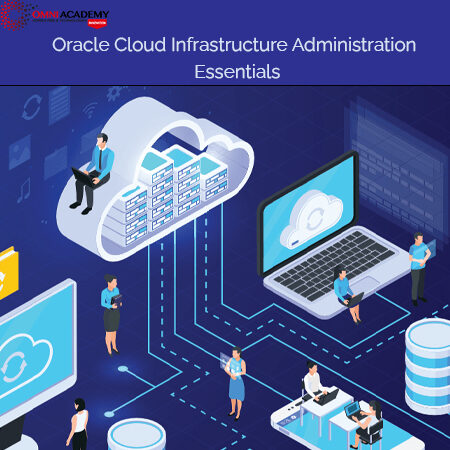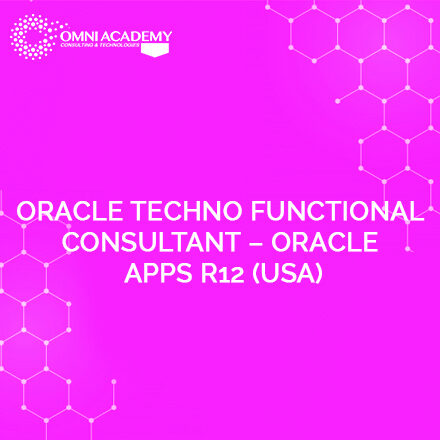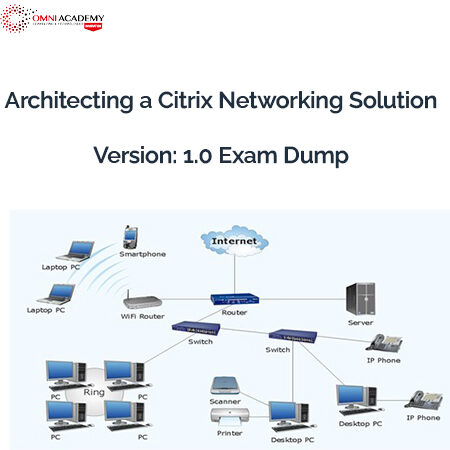Cisco 350-601 – Introducing Cisco Data Center Technologies Version:1.0
The Introducing Cisco Data Center Technologies (DCICT) v6.2 course prepares you for the Cisco CCNA® Data Center certification and for associate-level data center roles. The course covers foundational knowledge, skills, and technologies, including networking technologies, data center network virtualization, unified computing, data center automation and orchestration, and Cisco® Application Centric Infrastructure (Cisco ACI™). The training provided in this course is focused on data center basic operations covering the topics needed for today’s demanding associate-level positions.
Cisco technologies that are deployed in the Data Center: unified computing, unified fabric, and network services. The introductory level of knowledge that is taught in these courses is targeted for individuals who can perform only the more basic configuration tasks. The course labs will focus on verifying configurations, with selected exercises involving making configuration changes or designing new topologies.
Course Key Learnings
- Describe switch virtualization
- Describe machine virtualization
- Describe network virtualization, including overlays, virtual switches, and the Cisco Nexus® 1000V solution
- Describe Cisco FabricPath
- Describe Cisco Fabric Extender (FEX) connectivity
- Describe Ethernet port channels and virtual Port Channels (vPCs)
- Describe Cisco Unified Fabric
- Identify Cisco UCS components
- Describe the Cisco UCS organizational hierarchy and Role-Based Access Control (RBAC)
- Describe how to deploy servers in Cisco UCS
- Describe the purpose and advantages of Application Programming Interfaces (APIs)
- Describe cloud computing basic concepts
- Describe Cisco UCS Director and its functional blocks and deployment models
- Describe Cisco UCS Director orchestration features: policies, virtual data centers, workflows, and catalogs
- Describe Cisco ACI, traffic forwarding through the Cisco ACI fabric, and programming and orchestration capabilities
- Explain the traffic forwarding mechanisms in Cisco ACI
- Describe the programmability and orchestration capabilities of Cisco ACI
Course Outline
Cisco Data Center Network Virtualization
- Manage data center virtualization with Cisco Nexus 1000V
- Implement QoS, traffic flow, and IGMP snooping
- Implement network monitoring on Cisco Nexus 1000V
- Implement Cisco Nexus 1000V port channels
- Troubleshoot Cisco Nexus 1000V in a virtual environment
- Configure VLANs
- Configure port profiles
Implement Cisco Nexus 1000V security features
- DHCP snooping
- Dynamic ARP inspection
- IP source guard
- Port security
- ACLs
- Private VLANs
- Configure private VLANs
Cisco Data Center Network Technologies Configuration
Implement data center application high availability and load balancing
- Implement standard ACE features for load balancing
- Configure server load-balancing algorithm
- Configure different SLB deployment modes
- Implement health monitoring
- Configure sticky connections
- Implement server load balancing in HA mode
Cisco Unified Computing System
Implement LAN connectivity in a Cisco UCS environment
- Configure different port types
- Implement Ethernet end-host mode
- Implement VLANs and port channels
- Implement pinning and PIN groups
- Implement disjoint Layer 2
Implement SAN connectivity in a Cisco UCS environment
- Implement FC ports for SAN connectivity
- Implement VSANs
- Implement FC port channels
- Implement FC trunking and SAN pinning
Implement Cisco UCS server resources
- Create and implement service profiles
- Create and implement policies
- Create and implement server resource pools
- Implement updating and initial templates
- Implement boot from remote storage
- Implement fabric failover
Implement Cisco UCS management tasks
- Implement Cisco UCS management hierarchy using ORG (Organisation) and RBAC (Role Based Access Control)
- Configure RBAC groups
- Configure remote RBAC configuration
- Configure roles and privileges
- Create and configure users 2013 Cisco Systems, Inc. This document is Cisco Public. Page 4
- Implement backup and restore procedures in a Cisco UCS environment
- Implement system-wide policies
Cisco UCS troubleshooting and maintenance
- Manage high availability in a Cisco UCS environment
- Configure monitoring and analysis of system events
- Implement external management protocols
- Collect statistical information
- Firmware management
- Collect TAC-specific information
- Implement server recovery Tasks
Data Center Automation and Orchestration
- Using Application Programming Interfaces
- Cloud Computing
- Describing Cisco UCS Director
- Using Cisco UCS Director for Orchestration
Cisco Application-Centric Infrastructure
Implement Cisco NX-OS L2 functionality
- Implement VLANs and PVLANs
- Implement Spanning Tree Protocols
- Implement port channels
- Implement UDLD
- Implement fabric extension via the Cisco Nexus family
Implement Cisco NX-OS L3 functionality
- Implement basic EIGRP in a data center environment
- Implement basic OSPF in a data center environment
- Implement BFD for dynamic routing protocols
- Implement ECMP
- Implement Cisco Fabric Path
Implement basic Cisco NX-OS security features
- Implement AAA services
- Implement SNMPv3
- Configure IP ACLs, MAC ACLs, and VLAN ACLs
- Configure port security
- Configure DHCP snooping
- Configure dynamic ARP inspection
- Configure IP source guard
- Configure Cisco TrustSec
Implement Cisco NX-OS high-availability features
- Implement first-hop routing protocols
- Implement graceful restart
- Implement nonstop forwarding
- Implement port channels
- Implement vPC and vPC+
- Implement Overlay Transport Protocol (OTV)
Implement Cisco NX-OS management
- Implement SPAN and ERSPAN
- Implement NetFlow
- Implement Smart Call Home
- Manage system files
- Implement NTP and PTP
- Configure and verify Cisco DCNM functionality
Cisco NX-OS troubleshooting
- Utilize SPAN, ERSPAN, and Ethanalyzer to troubleshoot a Cisco Nexus problem
- Utilize NetFlow to troubleshoot a Cisco Nexus problem
- Given an OTV problem, identify the problem and potential fix
- Given a VDC problem, identify the problem and potential fix
- Given a vPC problem, identify the problem and potential fix
- Given a Layer 2 problem, identify the problem and potential fix
- Given a Layer 3 problem, identify the problem and potential fix
- Given a multicast problem, identify the problem and potential fix
- Given a Cisco FabricPath problem, identify the problem and potential fix
- Given a Cisco Unified Fabric problem, identify the problem and potential fix
Cisco Storage Networking
Implement Fibre Channel protocols features
- Implement port channel, Cisco ISL, and trunking
- Implement VSANs
- Implement basic and enhanced zoning
- Implement FC domain parameters
- Implement Fibre Channel security features
- Implement proper oversubscription in a FC environment
Implement IP storage-based solution
- Implement IP features, including high availability
- Implement iSCSI, including advanced features
- Implement SAN extension tuner
- Implement FCIP and security features
- Implement iSCSI security features
- Validate proper configuration of IP storage-based solutions
Implement Cisco NX-OS Unified Fabric features
- Implement basic FC in a Cisco NX-OS environment
- Implement FCoE
- Implement NPV and NPIV features
- Implement Cisco Unified Fabric Switch different modes of operation
- Implement QoS features
- Implement FCoE NPV features
- Implement multihop FCoE
- Validate configurations and troubleshoot problems and failures using command line, show, and debug commands
Final Project
Prerequisites
- Good understanding of networking protocols
- Good understanding of the VMware environment
How you’ll benefit
IT professionals who are Cisco trained and certified are uniquely qualified for associate-level or higher roles in enterprise-class data center environments. The Cisco CCNA certification equips you with skills in a broad range of technologies and industry best practices sought by hiring managers.
This class will help you:
- Gain knowledge and skills through Cisco’s unique combination of theory, practical application, and handson practice
- Succeed in today’s demanding associate-level data center roles
- Prepare to pass the Cisco CCNA Data Center certification exam
Who should enroll
- IT professionals with one to three years of experience in these roles:
- Data center engineer
- Network administrator
- Network engineer
- System administrator
- Systems engineer
- Network designer
- Consulting systems engineer
- Technical solutions architect
Flexible Class Options
- Evening Classes | Workshops | Fast-Track
- Week End Classes For Professionals – SUNDAY
- Online Classes – Live Virtual Class (L.V.C), Online Training
- CISCO Interview Question & Answers
- CCNAinterview Question & Answers
- Tough Open-Ended Job Interview Questions
- What to Wear for Best Job Interview Attire
- Job Interview Question- What are You Passionate About?
- How to Prepare for a Job Promotion Interview
Related Courses
CCNP Routing and Switching Certification
CCNA Routing & Switching Certification Course
CCIE Routing & Switching Course – VPN
Cisco 300-420 CCNP Cisco IP Switched Networks (SWITCH v2.0) Exam Dump Practice Test








